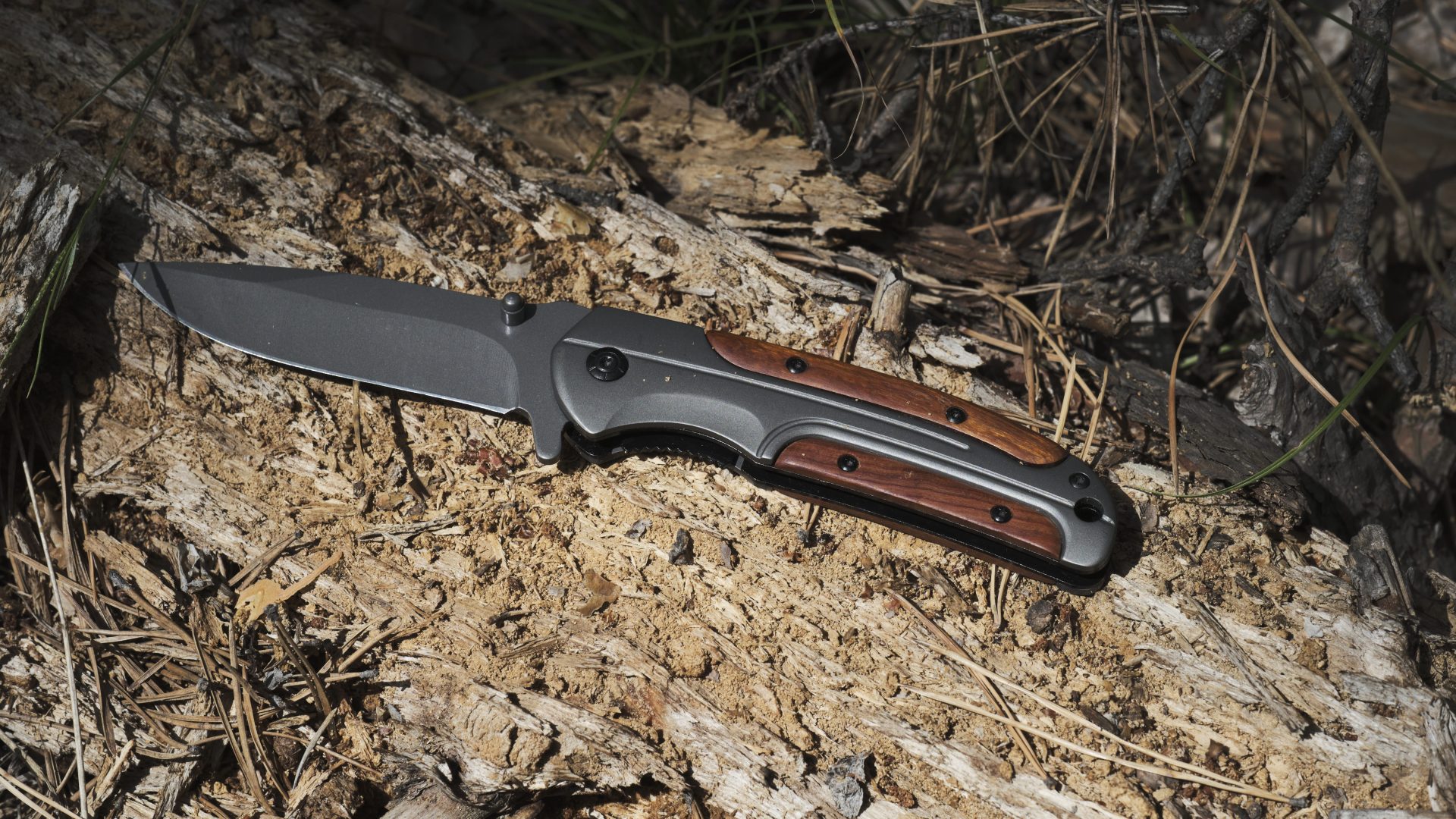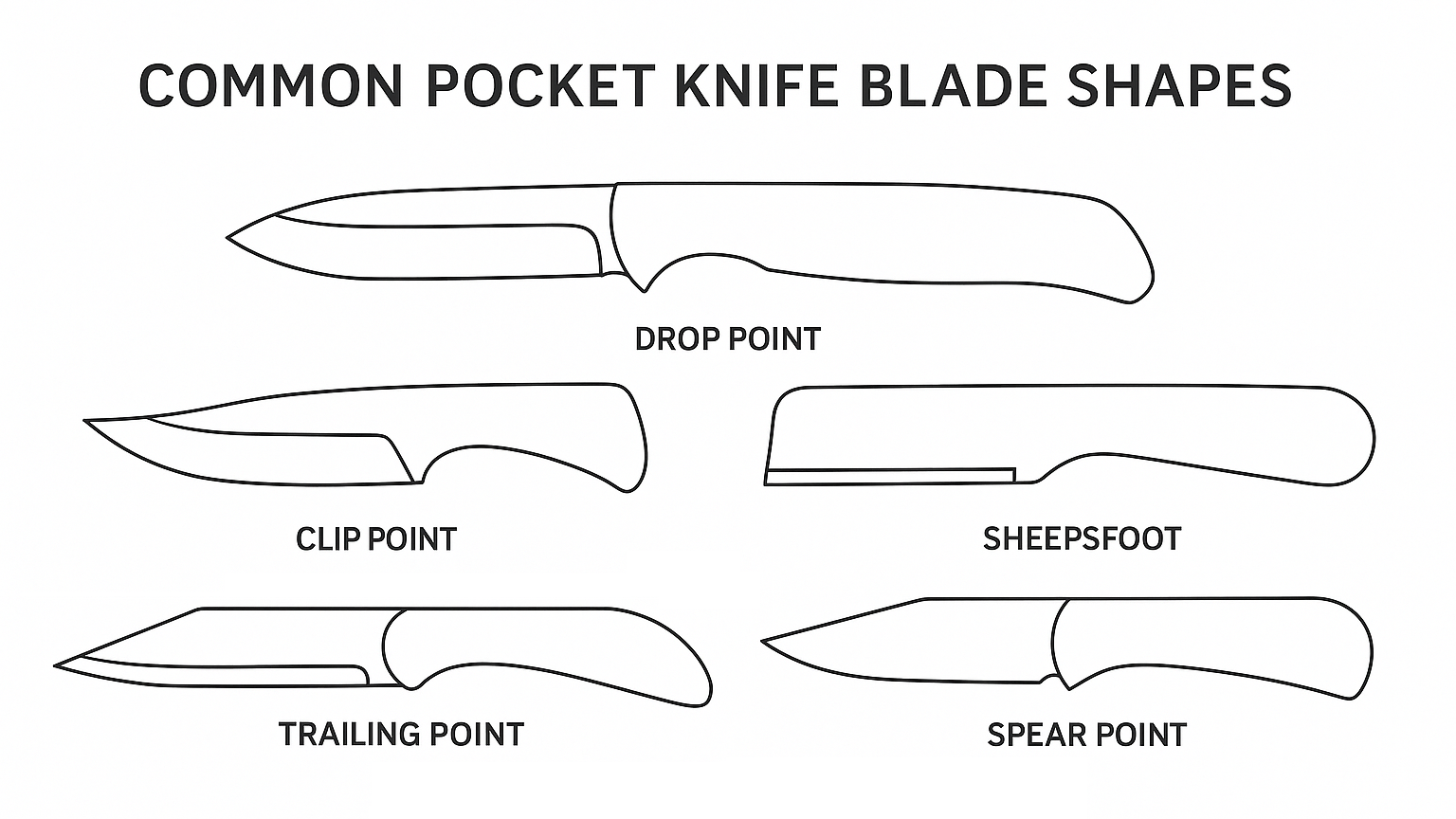
A pocket knife isn’t just a small tool — it’s a compact, foldable blade designed for everyday tasks like cutting, slicing, or opening packages. With so many types of pocket knives available — each with its own blade shape, lock type, and handle design — every style serves a unique purpose for everyday carry.
| Use Case | Recommended Knife Type | Blade Shape | Lock Type | Steel Option |
|---|---|---|---|---|
| Everyday carry (EDC) | Folding knife | Drop point | Liner lock | 14C28N / D2 |
| Outdoor & camping | Multi-tool / Fixed blade | Clip point / Spear point | Frame lock | 154CM / N690 |
| Fishing / Marine | Folding knife | Wharncliffe | Back lock | Stainless 12C27 |
| Rescue / Tactical | Assisted or OTF | Tanto | Button / Auto lock | 8Cr13MoV / D2 |
| Utility / Work | Slip joint / Box cutter | Sheepsfoot | Slip joint | 3Cr13 / D2 |
The most common and practical option for everyday carry. The blade folds into the handle for compact storage and safety. Great balance between portability and function.
Classic multi-blade designs like the Barlow, Stockman, or Trapper. Ideal for collectors and users who value heritage craftsmanship.
Equipped with screwdrivers, pliers, scissors, and more. A favorite among travelers, handymen, and outdoor enthusiasts.
Built for durability and quick deployment. Often include seat-belt cutters or glass breakers for emergency use.
A blade that deploys straight out of the handle with a switch. Fast, efficient, and designed for advanced users — check legality in your area before carrying.
| Blade Shape | Best For | Key Advantage |
|---|---|---|
| Drop Point | All-around EDC | Balanced control and strength |
| Clip Point | Precise cutting, hunting | Sharper tip, better piercing |
| Tanto | Tactical / Rescue | Exceptional tip strength |
| Sheepsfoot | Utility / Work | Safe tip, controlled slicing |
| Wharncliffe | Craft / Fishing | Fine straight edge for detail work |
| Spear Point | Outdoor / Survival | Dual edge and strong penetration |
| Trailing Point | Skinning / Food prep | Long curved belly for slicing |

Modern pocket knives rely on various locking systems to ensure safe use and one-hand operation, each offering different levels of strength and ease of use. Common types include liner, frame, back, and compression locks.
Your blade’s performance depends on its steel composition and heat treatment.
| Steel Type | Edge Retention | Corrosion Resistance | Ease of Sharpening |
|---|---|---|---|
| 12C27 | Medium | Excellent | Easy |
| 14C28N | High | Very good | Moderate |
| D2 | Very high | Medium | Harder |
| 154CM | Excellent | High | Moderate |
| N690 | Very high | Excellent | Moderate |
The handle affects comfort, grip, and overall weight. Common materials include:
Choose a handle that fits your hand size and the intended environment — textured grips for wet or outdoor conditions, smooth metals for formal EDC.
Laws differ by country and even state. Always check regulations about:
Q1: What blade shape is best for everyday carry?
A drop point is the most versatile — it offers balance, control, and durability.
Q2: What’s the difference between liner lock and frame lock?
Frame locks use the knife’s handle as the locking bar, offering greater strength for heavy-duty tasks.
Q3: How often should I sharpen my knife?
Every 1–2 months for frequent use, or whenever the blade starts tearing instead of slicing.
Q4: Are automatic or OTF knives legal?
It depends on your local jurisdiction. Many areas restrict automatic deployment knives.
Q5: What’s the best material for an EDC knife handle?
G10 and Micarta offer the best mix of grip, comfort, and durability.
Choosing the right pocket knife isn’t just about looks — it’s about purpose, safety, and reliability. Once you understand the different types of pocket knives, their blades, locks, and materials, finding your ideal everyday companion becomes easy.
A well-chosen pocket knife feels natural in hand, works when you need it, and lasts for years.
That’s the essence of smart everyday carry.